#slattery's hurricane
Explore tagged Tumblr posts
Text


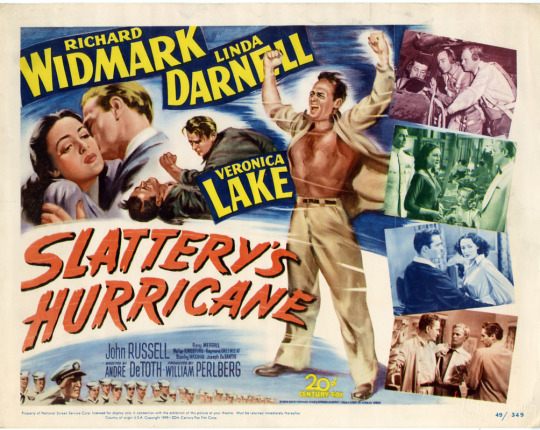

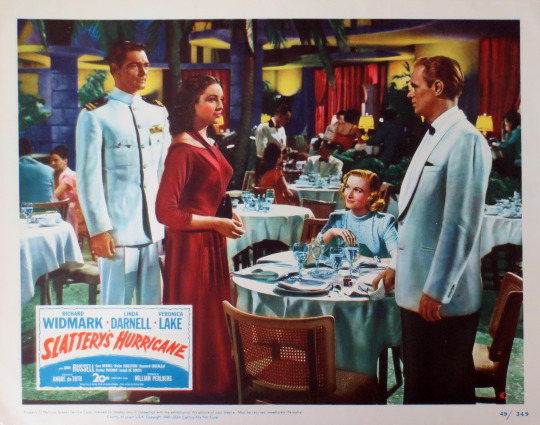
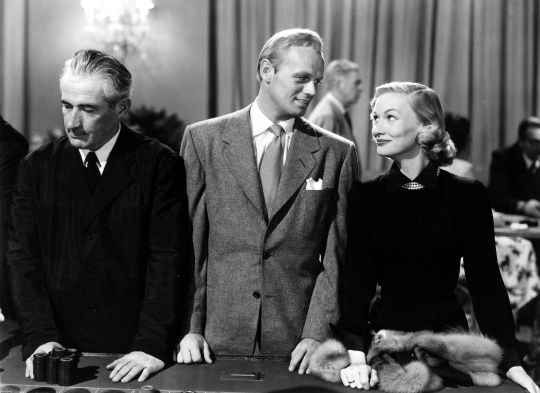

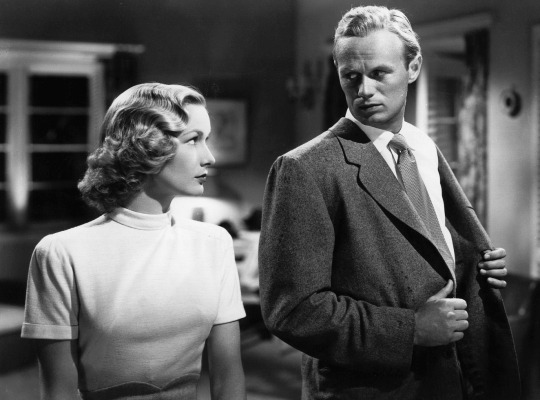
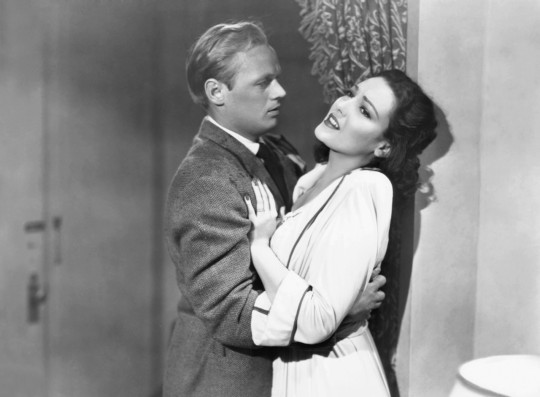
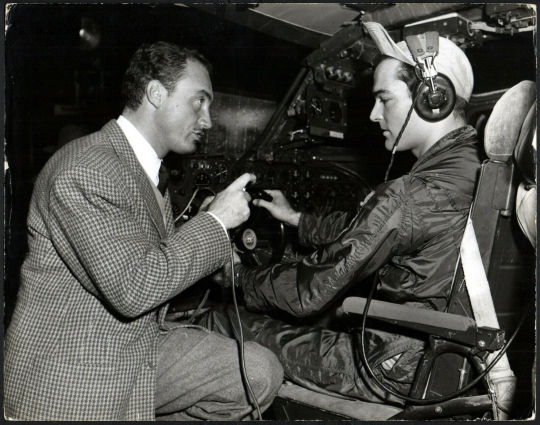
Slattery's Hurricane (1949) André de Toth
December 16th 2023
#slattery's hurricane#1949#André de Toth#richard widmark#veronica lake#linda darnell#john russell#walter kingsford#gary merrill#joe de santis
4 notes
·
View notes
Text

John Russell-Linda Darnell "Furia del trópico" (Slattery´s hurricane) 1949, de André De Toth.
12 notes
·
View notes
Photo


The Haunted Mortuary New Orleans
In New Orleans, graveyards makes a perfect back drop for a haunted attraction. However, The Haunted Mortuary is a bit more special than most. This attraction is set up in an actual haunted mansion. The massive three-story building was constructed in 1872 by Mary Slattery.
Her intentions was to build a home for generations of her family. Mary and her husband John had six children. Family friends Mr. and Mrs. John Kane also lived with the Slatterys. In October 1905, the house was sold to Mrs. Marie Lafontear and William Klein who maintained it until May 15, 1923. Then, it was purchased on behalf of PJ McMahon in 1928 as the future site of a grand funeral home called PJ McMahon and Sons. In 1959, an ambitious building project was launched adding a specially designed elevator, a rear garage for the discrete delivery of the dead, additional viewing rooms and offices. At its height, the building featured amenities found in only the nicest of mansions such as smoking parlors for the men, private bedrooms and apartments with separate baths for the bereaved, maid service, an on-site cook, dining facilities, chaise lounges for the ladies in their private bathrooms and private drawing rooms. The purpose was to mimic the comforts of home and rivaled all but a few of the grandest of residences of New Orleans.
PJ McMahon and Sons was a full-service funeral home. There was an autopsy room and an embalming room as well as a crematorium onsite, cold storage for the dead, casket storage, casket sales and a flower sales facility. The property was designed to anticipate and take care of every aspect of the funeral business. PJ McMahon and Sons was massively successful, performing an estimated twenty thousand funerals. On April 29th 1985, PJ McMahon and Sons merged with the Security Industrial Funeral Home Corporation. The building transferred owners a few times over the years. On March 23, 2004, EHN2 Holdings, also known as Neil Corporation which owns Aveda’s Spas purchased the mansion.
Neil Corp’s goal was to turn the ornate funeral home into a Day Spa Academy. They gutted the property due to its poor condition and the hazardous materials throughout the building. Almost everything was removed. All that was left was the wood framing, doors and the staircases of the building. In this process, the CEO of Neil Corp died by somewhat mysterious circumstances and their board decided to discontinue the project. The gutted building was listed for sale in 2004, remaining empty and abandoned for three years. During this period, Hurricane Katrina swept through in 2005. The mansion survived the storm due to being located on high ground. In July 2007, Jeff Borne, the owner of PSX Audio/Video Technologies purchased it, turning the house in to the Mortuary Haunted House that it is today.
The many souls who passed through PJ McMahon and Sons Funeral Home may never have left. A woman in white has been seen on the top floor crying for her long dead husband. A tall well-dressed man is said to appear whenever someone is disrespecting the cemeteries that surround the property. Two rambunctious ghost children, a boy and girl, have been known to play pranks on visitors. A former mortician is often seen in the basement continuing his bloody work beyond the grave. Other activity includes, footsteps, whispers, furniture moving on its own, and poltergeist activity.
#The Haunted Mortuary#haunted#haunted locations#ghost and hauntings#ghost and spirits#paranormal#haunted salem#myhauntedsalem
11 notes
·
View notes
Text
Veronica Lake and Richard Widmark in Slattery's Hurricane (1949).

0 notes
Photo

Slattery's Hurricane (1949)
38 notes
·
View notes
Text

Preparing for the Lux Radio Theater presentation of 'Slatterys Hurricane’ are Veronica Lake, Richard Conte, and Maureen O’Hara, 1950 Hollywood.
27 notes
·
View notes
Text
SHANG-CHI (2021) Review Pt. 1
Woooo I admit I was more hyped for this film than I had any right to be. Hyped and nervous. This was the media piece that had the potential to be the first "good" piece of Asian-American representation in a long time. It seemed things were falling in place: they got a Chinese-American dude to play the lead. They got a Chinese acting legend to play the villain. Asian-American women for strong supporting roles. They had an Asian-American director. Loads of Asian stunt actors and coordinators. Asian-American musicians for the soundtrack. But still...
I was nervous because of the narrative arc I glossed from the trailers. I expected it to be another american-child-beats-traditionalist-parent story, where the new American experience conflicts with and overcomes the evil (and weird) native heritage. It seemed that's what Shang-Chi, the American boy, would do to his ancient Chinese father. I was very glad that was not the case.
The relationship between Shang-Chi and Wenwu, and the two of them to Shang-Chi's mother, is the central component of the movie, and I was glad it was well written and acted to be very compelling. I greatly enjoyed the two parallel internal conflicts, though I have issue with how they were resolved. Wenwu was a ruthless immortal warlord, but gave it up for the wife, cuz that's the power of love baybeeee. Unfortunately, is past beefs catch up to him and his family, and return him to his old ways...but not completely I think, because now, he loves his son. And Shang-Chi, despite being trained into living weapon, loves him back, though hates him for making him kill. Their fight at the climax is a culmination of their sadness and rage, using the more violent style (Shaolin I think?). Wenwu is a master of this style, and so overcomes his son with it and nearly kills him. This is completely counter to Wenwu's goal of reuniting the family, really showing how far he's gone. Shang-Chi ultimately uses his mother's Tai Chi-based style to defeat his father, and spares him, telling Wenwu to let go and accept his wife's death. *Chef's kiss* delicious, and nearly perfect.
And then comes the dumb CGI monster ...
I actually like that the Ten Rings are directly tied to the evil supernatural monster, and that the monster manipulates Wenwu with his grief. However, I don't like that the monster's physical form is Western-style giant ugly bat thing. Actually I don't like that the monster has a physical form at all. I think it should've been some evil spirit that takes the form of the mom, and then possesses Wenwu via the Ten Rings. Possessed Wenwu and Shang-Chi would then duke it out...ok that would be a detailed rewrite, I will stick with a review. The big CGI monster was dumb. The smaller CGI monsters were also dumb. And the dragon...ok I think the dragon was dumb too. There were a lot better ways to "revive" Shang-Chi after getting beat up initially. It had no character, and no big plot connection. The climax should've been purely emotional kungfu, not a messy CGI hurricane.
Now onto the secondary characters.
I think Xialing and Shang-Chi's relationship was powerful and weighty, but wasn't given enough time, and wasn't resolved that great. Being on a flying dragon and "letting go", is not nearly the same as abandoning her for 10 years. They needed a real heart-to-heart, where they practice kung fu together. In addition, Xialing should've been there to confront Wenwu; after all, he is her dad also. And Wenwu should've acknowledged her too, after shunning her for so long. Damn!
Katy was...funny but she felt more and more extraneous as the movie went on, mostly serving to provide funny reactions. The old lady telling her to "aim for one thing" as a resolution to her main internal issue (fear of failure), felt cheap, like a checked box. Can't we leave that for the next movie? She did give us some of the funniest and relatable bits as a Chinese-American, such as when Ronnie Chieng said "Oh I don't worry I speak ABC", or when Wenwu assumed the warm-but-stern-friends-dad role to her, or the pronunciation struggle on the plane. She didn't have much role in Shang-Chi's character arc, except for serving as the audience for Shang-Chi to reveal his big secret to.
Ok I'm getting really bothered by "Shang-Chi" with the dash and double capital letters. The other characters all use pinyin format, and it's just weird for Shang-Chi to remain in the archaic romanization. Which is...a bit emblematic. Hm...
My main complaint for Ying Li (the mom) was she seemed too...angelic. Her scene with the young Shang-Chi seemed like something out of a mainland Chinese television commercial. But maybe it's appropriate, since she's dead, and that's how everyone remembers her? The way she died, face-up, no visible injuries, with a still-spotless white wushu uniform, was kinda...funny almost. The situation of a bunch of normally dressed gang members strolling into a mansion garden, fighting a wushu-garbed woman...also kinda funny. Her chemistry with Wenwu though, damn. That was some classic kungfu flirting.
Razorfist was funny. "That's my car!", him getting his life saved and accepting truce, him taking the blade off of a dragon-scale sword, all good moments. I'll allow him as the token diversity.
Oh I nearly forgot about Trevor Slattery. Yeah I'll allow him too, he and Morris were unobtrusively funny.
Death Dealer was done dirty. Such a cool design, and he's the first to die pathetically to the gross tentacle bats.
A dumb thing: I actually thought Michelle Yeoh would be the aged-up Fala Chen, because from the trailers I was under the impression Yeoh would be Shang-Chi's mom. Of her character, I liked her important role in helping Shang-Chi connect with his mom's memory, but I feel she should've been introduced earlier.
That's it for the story and character notes. Second Part will be about the meta stuff, like representation, orientalism, casting, etc.
#shang chi#simu liu#media review#marvel#kevin watches#asian american#tony leung#michelle yeoh#fala chen#awkwafina#zhang menger
2 notes
·
View notes
Text
When most people hear the name, “Veronica Lake” usually one of three things comes to mind – that incredible peek-a-boo hair, the Film Noir’s with Alan Ladd or possibly Kim Basigner playing a Miss Lake lookalike in L.A. Confidential (1997) – fun fact, she won the Best Supporting Actress Oscar for that role. Although, with Veronica’s heyday being well over half a century old, that’s sadly usually as far as it goes.
However, with the Classic Hollywood Era being hugely timeless and forever coming back into fashion, the genre is becoming less of a niché subject and more Stars are on the public radar. If you’re a long time Vintage Lover like myself, you’ll be aware that unfortunately, a lot of our favourites don’t have many books written about them, or if they do, they’ve been out of print for a number of years and can be hard to find, or very expensive. Therefore, when I came across the news that Dean Street Press were publishing a reprint of Veronica’s Autobiography, which was first released in 1969, I was absolutely ecstatic! As most who know me are probably aware of my love for Blonde Bombshells, it may not be as well known that Veronica is my other favourite, after Marilyn.
There have only been two books published on Veronica, which I must add, astounds me – and one of them is this one which was co-written by ghost writer Donald Bain, who sadly passed away in October of 2017. The other is by Jeff Lenburg and I am fortunate enough to have both. However, Lenburg’s book is fairly controversial as he takes a lot of his information from Veronica’s mother, who claims a lot of detrimental things about her daughter – yet was estranged from her for many, many years. I think it’s actually being reprinted this summer and I will read it again, but would definitely advise new fans to stick to Veronica’s own words.
The republished version of Veronica’s Autobiography features a new cover with a stunning publicity photo of her in Ramrod (1947) which was directed by her then Husband, André de Toth. The book is a shiny paperback, with a non crease format, so even when you’ve finished reading, it will be in great condition and can take pride of place on your bookshelf! At 215 pages and 27 chapters, it’s not a huge length, but definitely a substantial read and full of personal anecdotes from the Golden Age of Hollywood.
Broadcaster and writer, Eddie Muller adds a new Introduction and his following words really stuck with me, their relevancy still to this day does not go unnoticed,
“I’ll point out instead that while the public has granted Sterling Hayden, a legendary boozer and hash-head, a legacy as a heroic, larger-than-life iconoclast, it has branded Lake’s life after Hollywood a steady downward spiral of abasement, worthy of only pity. Blame a cultural double standard that applauds reckless rebellion in men but shames it in women.”
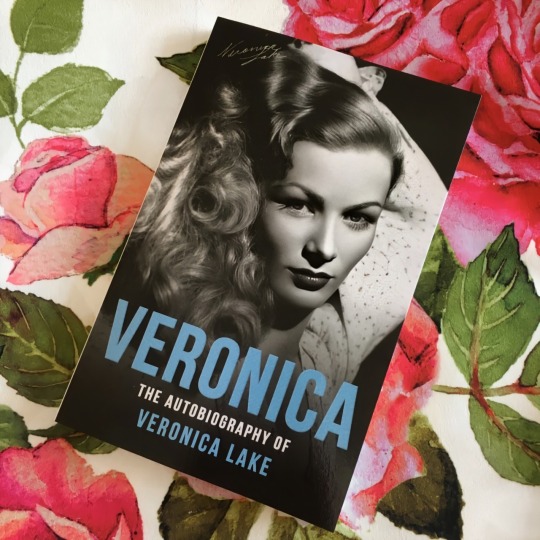
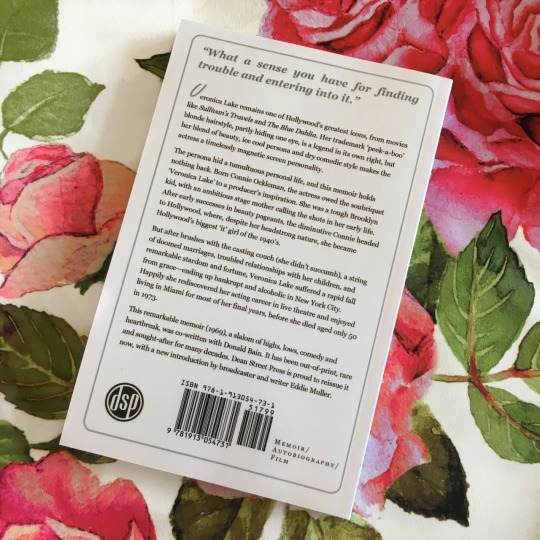
As the chapters do not have titles, I’ve decided to write down a snippet of information which sums up the pivotal points and various timelines in each section.
______________________________________________________________________________
Chapter 1:
– Starts in 1938 and traces Veronica’s move to Hollywood with her mother, step-father and cousin on the 4th of July. Veronica enrolls in the Bliss Hayden School of Acting and has her first role in a movie as an extra in RKO’s Sorority House (1939).
Chapter 2:
– Veronica’s signature peek-a-boo hairstyle is unintentionally created on the set of Forty Little Mothers (1940) by Director, Busby Berkeley who stated, “I still say let it fall. It distinguishes her from the rest”.
Chapter 3:
– Director, Freddie Wilcox sets up Veronica’s first Screen Test, whilst at home her step-father suffers a collapsed lung.
Chapter 4:
– Veronica joins the iconic William Morris Agency and recounts her knowledge of the infamous Hollywood Casting Couch and how she turned away from the many advances.
Chapter 5:
– Veronica meets her first husband, John Detlie and has her named changed by Producer, Arthur Hornblow Jr., who, after a second Screen Test, decides to cast her as Sally Vaughn in her breakout movie, I Wanted Wings (1941).
Chapter 6:
– Focuses on the location filming of I Wanted Wings (1941) from August 26th 1940 in San Antonio, Texas.
Chapter 7:
– Continues filming in Hollywood for I Wanted Wings (1941) and elopes to marry her first husband, John Detlie.
Chapter 8:
– Veronica discusses the first 8 years of her childhood and her move to Florida in her teen years and the two schools she attended in Montreal and Miami.
Chapter 9:
– Recounts various appearances in Miami Beauty Pageants as a teenager.
Chapter 10:
– Returns to 1941 with the release of I Wanted Wings (1941) and focuses on the worldwide phenomenon of the famous hair. Also finishes with Director Preston Sturges hiring Veronica for the role of The Girl in Sullivan’s Travels (1941).
Chapter 11:
Veronica shares the news of her first pregnancy with her mother and how her third trimester would coincide with the physical demands of filming Sullivan’s Travels (1941).
Chapter 12:
– Covers the filming of Sullivan’s Travels (1941) from May 12th 1941 and the revelation of Veronica’s pregnancy. It’s simply incredible when watching the film all these years later to come to the realization that she was between six to eight months pregnant!
Chapter 13: – The filming of This Gun For Hire (1942) and The Glass Key (1942).
Chapter 14:
– The filming of I Married A Witch (1942), So Proudly We Hail! (1943) and The Hour Before The Dawn (1944). Veronica also discusses the deterioration of her marriage and the tragic loss of her second baby, Anthony, who died a week after being born two months prematurely.
Chapter 15:
– Veronica divorces John and retells various anecdotes of the Hollywood Lifestyle in it’s heyday in the 1940s.
Chapter 16:
– Veronica discusses the filming of Star Spangled Rhythm (1942) and also her dating history during this period. She shares some fascinating stories of various celebrity anecdotes which include such Stars as, Errol Flynn, Katharine Hepburn, Howard Hughes and Gary Cooper.
Chapter 17:
– The filming of Bring On The Girls (1945), Duffy’s Tavern (1946) and Hold That Blonde! (1945). Veronica recalls marrying her second husband, Andre de Toth and shares a moving story from her visit to The White House in January 1945.
Chapter 18:
– The filming of Miss Susie Slagles (1946), Out Of This World (1945), Ramrod (1946), The Blue Dahlia (1946), Saigon (1947) and The Sainted Sisters (1948). Veronica and Andre expand their family as she has her third baby, a boy named Michael. She also talks about her and Andre obtaining their Pilot Licenses and how the death of her step-dad deeply affected her.
Chapter 19:
– Features a highly entertaining story of Veronica flying her plane, whilst carrying her forth child, in her fifth month of pregnancy. With her on board is her secretary Marge, who up until then had never flown before.
Chapter 20:
– Veronica gives birth to her forth baby, a girl named Diana and talks about the turmoil of her relationship with her mother, who decided to sue her for, “lack of filial love and responsibility” and over $17,000.
Chapter 21:
– The filming of Slattery’s Hurricane (1949) and Stronghold (1951). Veronica discusses her frustration with Andre’s prolific spending, which results in them filing for bankruptcy and ultimately, the deterioration of their marriage.
Chapter 22:
– Veronica moves to New York in 1951 and continues her acting career through various television appearances and the stage. She enters her third marriage to husband, Joe McCarthy, which she admits was volatile from the start and they divorce after just four years, in September 1959.
Chapter 23:
– Covers the years 1959 through to 1961. Veronica discusses her time taking a job as a cocktail waitress – which contrary to popular belief, she actually quite enjoyed. She also talks about the traumatic accident which resulted in a severely broken ankle, which caused her inability to act for two years.
Chapter 24:
– Delves into her relationship with Andy Elickson, a Merchant Seaman, who she met during her time working in the Martha Washington Hotel and focuses on the period between 1961 and 1966. She also writes about a high note in her stage career; appearing in Best Foot Forward in 1963.
Chapter 25:
– Veronica discusses her move to Miami from New York in 1966.
Chapter 26:
– The filming of Footsteps In The Snow (1966) and Flesh Feast (1970) which was then known as Time Is Terror and was originally shot in 1967.
Chapter 27:
– Ends in October 1967 with Veronica discussing her reading performance of The World of Carl Sandburg, which she describes as one of the, “finest moments” of her life.
______________________________________________________________________________
Veronica’s words are full of honesty, she does not sugar-coat her flaws and her anecdotes convey a great sense of humbleness towards her career and lots of self criticism to her talent, the latter which saddens me. I’ve noticed many of the great Stars rarely seem to have any belief in themselves. If only they could see how loved and appreciated they truly are. However, her loyalty and generosity towards her close friends and even acquaintances does not go unnoticed. It’s refreshing to see her be able to share her own story, without various opinions and conspiracies that have grown over the years being included.
Overall, there’s only two downsides that springs to mind. Firstly, as the book was originally published in 1969 and finishes at the end of 1967, we’re missing the six final years of her fascinating life and tragically nothing can be done to change this. Of course no one is at fault, it’s just a shame that those last years will remain mostly a mystery to us. It would have been wonderful to read about her time in England. Lastly, in the original edition, a number of pages featured very rare photos of Veronica throughout her years, including her own comments. Sadly, only a small version of the cover photo reappears at the end of the newly republished book. I’m assuming this is down to cost and or copyright, but it would be nice to see these rare treasures reappear in the latest edition for fans that are not fortunate enough to also own an original copy.
Ultimately, Veronica always maintains her true self and comes across as not a Screen Icon, but just like one of us – albeit with some extraordinary Hollywood stories. She’s simply, and I mean this in the most complimentary way – a human being. It’s been almost a decade since I discovered Veronica, eight years in fact and I for one have not only became even more endeared to Miss Lake, but, I have also developed a warm space in my heart for my fellow 5’2″ little lady, Miss Connie/Ronni Keane.
Lastly, a huge thank you to Dean Street Press for believing in the popularity of Veronica and so wonderfully reprinting hers and Donald Bain’s special words for us all to enjoy.
For anyone who wants to see more of Veronica, I’ve amassed a fairly large archive of photos over the years which can be viewed on my blog devoted entirely to her; missveronicalakes.
Follow me at;
BLOGLOVIN
INSTAGRAM
TUMBLR
TWITTER
YOUTUBE
For inquiries or collaborations contact me at;
Veronica: The Autobiography of Veronica Lake; Book Review. When most people hear the name, "Veronica Lake" usually one of three things comes to mind - …
#1940s#1950s#1960s#autobiography#blonde bombshell#book review#classic hollywood#constance keane#donald bain#femme fatale#icon#legend#old hollywood#peek-a-boo blonde#veronica lake#vintage
30 notes
·
View notes
Text
It Seems Like Nothing Changes
by Paul Cussen
September 1919

The Cork Furniture Store, which in June had taken over London House, changes its name to Roches Stores.
Fr Dominic O’Connor puts Josephine McCoy in touch with Florrie O’Donoghue to whom she passes secret army reports. The IRA claim that her assistance results in the deaths of three British Army officers and six civilians accused of assisting the Crown forces.
The Commander-in-Chief, Ireland, Sir Frederick Shaw suggests that the police force in Ireland be expanded via the recruitment of a special force of volunteer British ex-servicemen.
James Joyce finishes copying “Cyclops” which is to appear over three issues the Little Review from November 1919 to January 1920.

General Pershing leads his troops in a victory parade in New York.
The last soldiers of the British West Indies Regiment return home to Jamaica, Barbados & Trinidad from Europe.
2 September
R.I.C. Sergeant Philip Brady is shot dead between Carrigahorig and Lorrha, Co. Tipperary. Constable Foley is badly wounded in the ambush.
2-16 September
The Florida Keys hurricane travels from the Leeward Islands to West Texas claiming 772 fatalities and causing $22 million of damage.
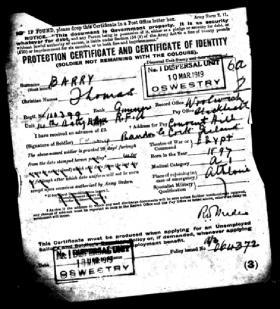
3 September
Tom Barry is granted a pension for 66 weeks for suffering malaria and DAH (Disordered Action of the Heart, a medical condition on his file). His address is given as Convent Hill, Bandon, Co. Cork.
The body of farmer Owen Daly of Rowel, Co. Cork is found on the road near Broadford. He was shot several times and death was believed to have been instantaneous. Mr. Daly had police protection some years ago and it is believed this may have some connection with his murder.
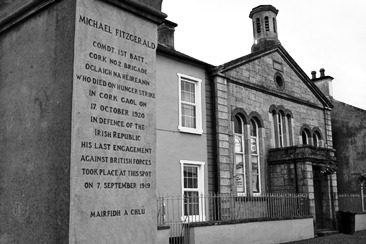
7 September
Cork Volunteers, under the leadership of Liam Lynch, assisted by Mick Mansfield and George Lennon of Waterford, attack members of the Royal Shropshire Light Infantry en route to services at the Wesleyan Church in Fermoy.

Private William Jones receives a fatal gunshot to the heart and a Private Lloyd is shot in the neck. Fifteen rifles are captured. Lynch is wounded in the shoulder and taken to a Youghal safe house.
Louise Simone Bennett-Coverley or Miss Lou is born Kingston, Jamaica (d. 2006)

8 September
Two hundred British soldiers loot and burn several commercial buildings in Fermoy in reprisal for the death of Private Jones.
The Coroner's Jury on the death of Jones reached the verdict that "these men came for the purpose of getting rifles, and had no intenton of killing anyone".
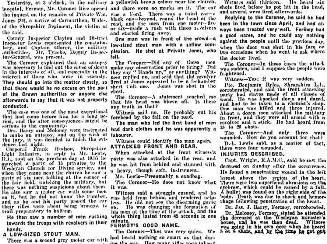
In Honduras President Bertrand resigns after ten people are killed in political violence in Tegucigalpa.

9 September
British troops in Fermoy are confined to barracks.
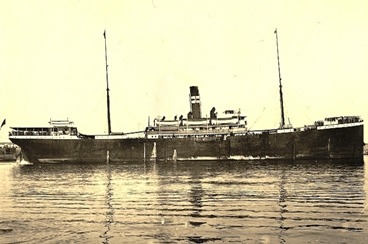
The last contact with the steamship Valbanera, which sinks in the Carribean during a hurricane, with the loss of 488 crew and passengers.
1,117 of Boston’s 1,544 Police Department fail to report for work, going on strike seeking recognition for their trade union.
10 September
British troops are confronted on Emmet Street in Fermoy and driven back to their barracks by a large crowd of local residents armed with sticks, stones and other weapons.
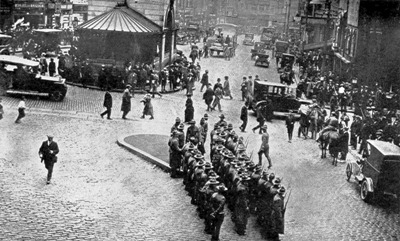
5,000 Massachusetts State Guard are deployed in place of the police force to combat looting. Robert Lallie is shot and killed when State Guard troops “cavalry charge” in Scollay Square.
The treaty is signed officially ending the war between the Allies and Austria in the Château de Saint-Germain-en-Laye.
11 September
US Marines are deployed to Honduras in a peacekeeping capacity.
12 September
Dáil Éireann is outlawed by the British.
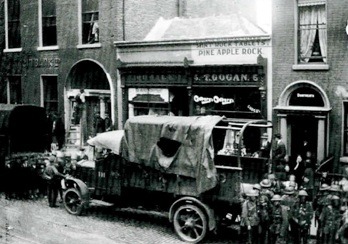
A number of Sinn Féin centres are raided.
Mr. Patrick O'Keefe, M.P. for North Cork, is arrested under a direction issued by the General Officer Commanding Southern District, Ireland, and tried by district court-martial in Dublin, and sentenced to imprisonment without hard labour for one year and six months for offences under the Defence of the Realm Regulations.
Mr. Ernest Blyth, M.P. for North Monaghan, is arrested and committed to Mountjoy Prison, Dublin, to await his trial by court-martial for an offence against the Defence of the Realm Regulations.
Detective Daniel Hoey of G Division of the Dublin Metropolitan Police is assassinated by Volunteers Tom Ennis, Mick McDonnell and Jim Slattery.

The poet Gabriele D'Annunzio organizes a militant nationalist group and takes Fiume (Rijeka) for Italy.
The German Worker’s Party accepts its seventh member, an army spy, Corporal Hitler.
Leonid Nikolaievich Andreyev dies in Finland of heart failure (b. 1871)
13 September
The Boston Police Strike ends when Commissioner Curtis announces the replacement of all striking workers with 1,500 new officers on higher wages. Eight of the nine fatalities of the Boston Police Strike are shot by members of the State Guard.
George Weidenfeld is born in Vienna (d. 2016)
15 September
Michael ffrench-O'Carroll is born in Dublin (d. 2007)

16-20 September
The second PGA Championship is played at the Engineer’s Country Club on Long Island and is won by Englishman Jim Barnes.
19 September
The official founding of ‘The Squad’ the IRA counter-intelligence and assassination squad.

21 September
Cork wins the All-Ireland hurling final:
Cork 6-4
Dublin 2-4
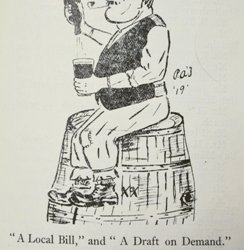
25 September
Eastern Transbaikalian Front partisans under Pavel Zhuravlev attempt to escape encirclement by White Transbaikalian forces under Grigory Semyonov in the Battle of Bogdat which lasts until October 19.
President Woodrow Wilson collapsed from “a nervous reaction in his digestive organs” after addressing a crowd in Pueblo, Colorado.
26 September
The Revolutionary Insurrectionary Army of Ukraine defeats the White Volunteer Army at the Battle of Peregonovka, capturing machine guns and artillery pieces.
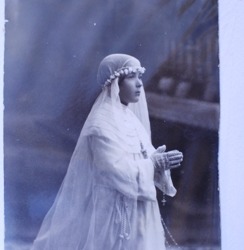
Matilde Camus is born in Santander (D. 2012)
27 September
British troops withdraw from Archangelsk after fighting Bolsheviks.
In the US the Democratic National Committee votes to allow female members.
28 September
President Wilson tips his hat to the waiting crowd at the train station in Washington, shakes the hands of some people gathered along the track platform, and is whisked away to the White House.
28-29 September
The Omaha race riot occurs, resulting in the brutal lynching of Will Brown and the attempted hanging of mayor Edward Smith.
30 September
Avery Hopwood's Gold Diggers premieres in New York.
4 notes
·
View notes
Photo
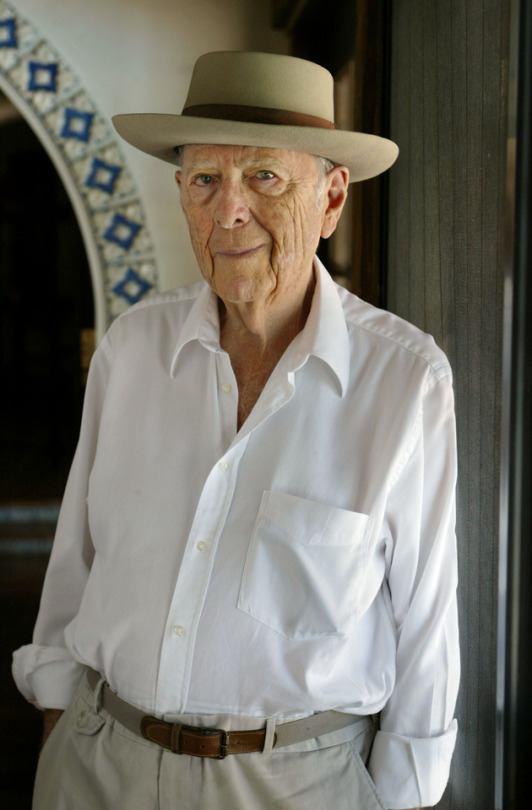
Herman Wouk, Pulitzer Prize-winning master of sweeping historical fiction, dies at 103
Herman Wouk, the Pulitzer Prize-winning author of the Navy drama “The Caine Mutiny,” whose sweeping novels about World War II, the Holocaust and the creation of Israel made him one of the most popular writers of his generation and helped revitalize the genre of historical fiction, died May 17 at his home in Palm Springs, Calif. He was 103.
His literary agent, Amy Rennert, confirmed the death but did not provide a cause.
Mr. Wouk (his last name is pronounced “Woke”) penned a dozen novels, a handful of plays and several nonfiction books over the course of his nearly 60-year career. A meticulous researcher, he specialized in stories of personal conflict set against the backdrop of compelling historical events, including “The Caine Mutiny” (1951), “The Winds of War” (1971) and “War and Remembrance” (1978). The latter two became ABC miniseries in the 1980s starring Robert Mitchum that averaged tens of millions of viewers over the course of their broadcast and were the highest-rated miniseries after Alex Haley’s “Roots.”
In a form that the author would echo in other novels, “The Winds of War” and its sequel, “War and Remembrance,” trace World War II through the experiences of one family. “The Winds of War” follows Navy officer Victor “Pug” Henry and his relatives from the German invasion of Poland to the Japanese attack on Pearl Harbor, where its sequel begins and then proceeds to the dropping of the atomic bomb on Hiroshima, Japan.
The pair of books established Mr. Wouk’s legacy as a master of historical fiction, in which he blended the narrative power of fiction with great understanding and empathy for the human motivations behind wars and other historical events. The Economist magazine said “The Winds of War” was “as serious a contribution to the literature of our time as ‘War and Peace’ was to that of the nineteenth century.”
Librarian of Congress James H. Billington said Mr. Wouk helped enliven history in ways that many academic tomes never could and prompted readers to examine the past through engaging fictional characters. “I think he’s been a seminal figure because he’s recrafted the historical novel for a modern audience and not for some niche market,” Billington, who died last year, told The Washington Post in an interview for this obituary.
Mr. Wouk, who said he was never a “high stylist,” attracted a mass audience with books that espoused such values as gallantry and leadership under pressure. Leading critics sniffed at his books, which they often said broke no ground in writing style or character development.
The literary essayist Leslie Fiedler once explained Mr. Wouk’s critical reputation by comparing him with Nobel laureate Saul Bellow. “Bellow, like most writers critics take seriously, attacked the basic values of middle-class Americans: easy piety, marriage, life in the suburbs,” Fiedler said. “Wouk challenges nothing.”
Mr. Wouk said he found nonconformity for its own sake an all-too predictable theme in modern literature and had no interest in experimental or temporarily trendy prose styles. “I write a traditional novel, which is rather unfashionable, and I’ve taken a lot of kicking for it,” he once told The Post. “But the strength of my work comes from this intense grounding in the 18th- and 19th-century novelists.”
His very significance, wrote Time magazine in a 1955 cover story, was that “he spearheads a mutiny against the literary stereotypes of rebellion — against three decades of U.S. fiction dominated by skeptical criticism, sexual emancipation, social protest and psychoanalytic sermonizing.”
Mr. Wouk began his professional career as a gag writer in the 1930s before moving to the staff of the popular radio comedian Fred Allen. He got that job in part for his notoriety at Columbia University, where his Class of 1934 yearbook named him the wittiest student. He later joked, “It was not a very sparkling class.”
Enlisting in the Navy during World War II proved a transformative experience in his development as a writer.
“My life was broken at the time, as it was for all of our generation, by the coming of the war, and the winds of war swept a Bronx boy halfway around the world, below the equator, and he landed on an old destroyer minesweeper called the USS Zane,” Mr. Wouk told a National Press Club audience. “And that, I think, is where my adult education really began, because there, the hard shell of a New York wise guy cracked and fell off. The shallow conceit of a successful gag man faded away. . . . When I came back, there no longer was a question of a gag writing. I wanted to write novels.”
“The Caine Mutiny: A Novel of World War II” in 1951 brought Mr. Wouk his first critical and popular success, including the Pulitzer. The book centers on a power struggle aboard the destroyer-minesweeper Caine, culminating in a young lieutenant seizing control of the vessel from the paranoid Capt. Queeg after the crew thinks it faces imminent danger.
The action culminates in a court-martial for the lieutenant. Although the novel raised questions of authority and duty versus personal freedom, the naval community embraced it. Queeg also became one of the most memorable characters of the day, a man who relieved his stress by obsessively rolling steel bearings in the palm of his hand.
Time magazine called “The Caine Mutiny,” which sold more than 5 million copies worldwide and was translated into 17 languages, the “biggest U.S. bestseller since ‘Gone With the Wind.’ ” A 1954 film adaptation of the novel, starring Humphrey Bogart as Queeg, became a popular hit, earning Bogart an Academy Award nomination.
The stage version of the courtroom scenes from “The Caine Mutiny,” called “The Caine Mutiny Court-Martial,” proved a Broadway success in the 1950s with Henry Fonda and Lloyd Nolan and remained a staple of community theaters, with productions as far away as China.
Mr. Wouk became further embedded in the cultural firmament with film adaptations of his other books, including “Marjorie Morningstar,” with Gene Kelly and Natalie Wood.
“Marjorie Morningstar,” published in 1955, underscored another major aspect of Mr. Wouk’s life: books whose themes were central to his Orthodox Jewish faith. “Marjorie Morningstar,” about a young Jewish woman who dreams of being an actress and eventually settles into a life as a suburban housewife, explores how Jews struggled to reconcile their faith with American society. It earned the public’s affection, if not the critics’, and it was credited with helping broaden interest in Jewish American novels later that decade by Philip Roth and others.
Herman Wouk was born May 27, 1915, in the Bronx, which he once called “that romantic, and much overcriticized borough” of New York. His parents were Jewish immigrants from Russia, and his father worked his way into the presidency of a laundry-chain business.
As a child, he told Time, he was the neighborhood fat boy forever being “clobbered” by street toughs. He found comfort in books that his mother bought from a traveling salesman when he was 12. In particular, he grew to love the writing of Mark Twain for his ability to make people laugh, even at matters of faith.
The arrival from Russia of his maternal grandfather, an Orthodox Jewish rabbi, would have a decisive influence on Mr. Wouk’s beliefs and many of his later works of fiction and nonfiction.
Mr. Wouk decided at a young age that he wanted to be a writer. He wrote for the college humor magazine and several student musical comedy revues, one of which prompted a student critic to quip, “All Wouk and no play.”
He graduated in 1934 with majors in philosophy and comparative literature and took a $15-a-week job working for a man he called the “czar of gag writers,” who modernized and cleaned up old jokes and sold them to entertainers such as Eddie Cantor. Within a few years, he joined Fred Allen’s comedy-writing team.
Mr. Wouk returned to comedy later in his career, collaborating with singer Jimmy Buffett on a musical based on Mr. Wouk’s 1965 novel “Don’t Stop the Carnival,” about a harried New York publicist who flees to the fictitious Caribbean island of Amerigo to run a resort hotel. The show became a crowd favorite when it opened in 1997 in Miami’s Coconut Grove Playhouse.
As war broke out in Europe, Mr. Wouk in 1941 worked on radio shows promoting purchases of war bonds before enlisting in the Navy. The experience, eventually as executive officer of the destroyer-minesweeper Southard, helped inspire “The Caine Mutiny.”
Mr. Wouk’s first novel, “Aurora Dawn,” was published in 1947. It started as a play he was writing while at sea during the war but evolved into a full-blown story about the life and romances of a radio advertising worker. Though the reviews were mixed, it was selected by the Book of the Month Club.
His next novel, “City Boy” (1948), was about a Jewish youth from the Bronx whom Mr. Wouk based in part on himself. Then, in 1949 came the screenplay for the film “Slattery’s Hurricane,” starring Richard Widmark as a man seeking to redeem himself by flying a reconnaissance mission in a hurricane. The book of the same title was published in 1956.
“The Caine Mutiny” proved the sensation that fully established Mr. Wouk's career. His later novels included “Youngblood Hawke” (1962), about an American writer who becomes a victim of his own success, and “The Hope” (1993) and “The Glory” (1994), which documented the struggle for Israeli statehood from the perspective of several fictional families. In 2012, Mr. Wouk published his last novel, “The Lawgiver,” which revolves around the making of a screenplay about Moses and includes Mr. Wouk himself as a character. In 2016, he published a memoir, “Sailor and Fiddler: Reflections of a 100-Year-Old Author,” and up until a month ago, he was working on another book.
The Library of Congress held events in honor of Mr. Wouk on multiple occasions, including naming him, in 2008, the recipient of its first lifetime achievement award for fiction writing. But he acknowledged that he wasn’t much for being in the public spotlight or at large soirees, instead preferring to throw small dinners with his wife of more than 60 years, the former Betty Brown, who went by her Hebrew name, Sarah. Mrs. Wouk died in 2011, at 90.
Their son Abraham drowned as a child in 1951. Survivors include two children, Iolanthe Woulff and Joseph Wouk; three grandchildren; and two great-grandchildren.
Mr. Wouk once joked in a speech that historical fiction is “at best a bastard form and highly suspect.” While his dedication to the genre earned him the respect of such scholars as historian David McCullough and Churchill biographer Martin Gilbert, Mr. Wouk said he recognized that his most important job was as a storyteller.
“A historical novel, to have any chance of lasting, must meet the highest standards of academic history,” he told an audience in Melbourne, Australia, “and then the novelist has to discard 90 percent of the history in order to tell the story.”
Daily inspiration. Discover more photos at http://justforbooks.tumblr.com
12 notes
·
View notes
Text

Cartel película "Furia del trópico" (Slattery´s hurricane) 1949, de André De Toth.
1 note
·
View note
Photo

The Haunted Mortuary New Orleans
In New Orleans, graveyards makes a perfect back drop for a haunted attraction. However, The Haunted Mortuary is a bit more special than most. This attraction is set up in an actual haunted mansion. The massive three-story building was constructed in 1872 by Mary Slattery.
Her intentions was to build a home for generations of her family. Mary and her husband John had six children. Family friends Mr. and Mrs. John Kane also lived with the Slatterys. In October 1905, the house was sold to Mrs. Marie Lafontear and William Klein who maintained it until May 15, 1923. Then, it was purchased on behalf of PJ McMahon in 1928 as the future site of a grand funeral home called PJ McMahon and Sons. In 1959, an ambitious building project was launched adding a specially designed elevator, a rear garage for the discrete delivery of the dead, additional viewing rooms and offices. At its height, the building featured amenities found in only the nicest of mansions such as smoking parlors for the men, private bedrooms and apartments with separate baths for the bereaved, maid service, an on-site cook, dining facilities, chaise lounges for the ladies in their private bathrooms and private drawing rooms. The purpose was to mimic the comforts of home and rivaled all but a few of the grandest of residences of New Orleans.
PJ McMahon and Sons was a full-service funeral home. There was an autopsy room and an embalming room as well as a crematorium onsite, cold storage for the dead, casket storage, casket sales and a flower sales facility. The property was designed to anticipate and take care of every aspect of the funeral business. PJ McMahon and Sons was massively successful, performing an estimated twenty thousand funerals. On April 29th 1985, PJ McMahon and Sons merged with the Security Industrial Funeral Home Corporation. The building transferred owners a few times over the years. On March 23, 2004, EHN2 Holdings, also known as Neil Corporation which owns Aveda’s Spas purchased the mansion.
Neil Corp’s goal was to turn the ornate funeral home into a Day Spa Academy. They gutted the property due to its poor condition and the hazardous materials throughout the building. Almost everything was removed. All that was left was the wood framing, doors and the staircases of the building. In this process, the CEO of Neil Corp died by somewhat mysterious circumstances and their board decided to discontinue the project. The gutted building was listed for sale in 2004, remaining empty and abandoned for three years. During this period, Hurricane Katrina swept through in 2005. The mansion survived the storm due to being located on high ground. In July 2007, Jeff Borne, the owner of PSX Audio/Video Technologies purchased it, turning the house in to the Mortuary Haunted House that it is today.
The many souls who passed through PJ McMahon and Sons Funeral Home may never have left. A woman in white has been seen on the top floor crying for her long dead husband. A tall well-dressed man is said to appear whenever someone is disrespecting the cemeteries that surround the property. Two rambunctious ghost children, a boy and girl, have been known to play pranks on visitors. A former mortician is often seen in the basement continuing his bloody work beyond the grave. Other activity includes, footsteps, whispers, furniture moving on its own, and poltergeist activity.
15 notes
·
View notes
Text

Slattery's Hurricane, 1949
0 notes
Photo

Slattery's Hurricane (1949)
38 notes
·
View notes
Text

Linda Darnell, Richard Widmark, and Veronica Lake for André De Toth’s SLATTERY'S HURRICANE (1949)
31 notes
·
View notes
Text





JOHN RUSSELL.
Filmography
1945 A royal scandal
1945 A bell for Adano
1945 Within these walls
1946 The Dark Corner
1946 Somewhere in the night
1946 Three Girls in Blue
1947 Always Amber
1948 Sitting pretty
1948 Yellow Sky
1949 Hurricane Slattery
1949 The Girl Who Took the West
1949 The Molly X Story
1949 Hangover
1950 Saddle Tramp
1950 Frenchie
1951 the fat man
1951 Fight against the Coast Guard
1951 The Barefoot Postman
1951 The man in the chair
1952 Oklahoma Annie
1952 Hoodlum Empire
1953 The Sun Shines Brightly
1953 Wind just to Java
1954 Jubilee Trail
1954 Hell Outpost
1955 The Last Command
1957 Indomitable Youth
1957 Hell Bound
1957 The Dalton Girls
1958 Strong Massacre
1959 Rio Bravo
1959 Yellowstone Kelly
1965 Apache Uprising
1967 Hostile weapons
1967 Fort Utah
1968 Buckskin
1968 Jungle of Fireballs
1968 If he screams, let him go!
1970 Sunday noon
1970 Cannon of Córdoba
1971 Blood Legacy
1975 Smoke in the wind
1975 Runaway Lovers
1976 The Outlaw Josey Wales
1976 Where the wind dies
1977 Mission to Glory: A True Story
1981 Uncle Scam
1981 Six Banknotes to Hell
1982 Honkytonk Man
1985 The Pale Rider
1988 Under the Gun.
Créditos: Tomado de Wikipedia
https://en.wikipedia.org/wiki/John_Russell_(actor)?fbclid=IwAR1Smj1rqqgMRUbt5N3Z5mC2AIKXEemH6zQwF3mHrsVsvgr3pgSIp7-5Pp8
0 notes